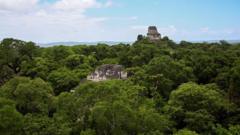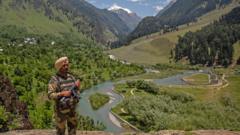The iconic Roman archaeological site of Pompeii is set to limit daily visitors to 20,000 starting November 15, 2023, a move aimed at conserving the site as attendance surpasses pre-pandemic levels.
Pompeii Implements Visitor Cap Amid Rising Tourist Numbers

Pompeii Implements Visitor Cap Amid Rising Tourist Numbers
Adopting a new visitor limit of 20,000 per day, Pompeii seeks to balance tourism with preservation efforts following record attendance this year.
The Roman archaeological site of Pompeii has announced a cap on daily visitors, limiting attendance to 20,000 individuals beginning November 15, 2023. This decision arises after an unprecedented surge in tourism, with 36,000 visitors recorded on a free-entry Sunday earlier this month. The park's management believes the new visitor limit is crucial for maintaining the integrity and safety of the site, which was preserved under volcanic ash following the catastrophic eruption of Mount Vesuvius in AD 79.
In 2023 alone, Pompeii attracted nearly four million visitors, reflecting a 33% increase compared to the previous year. Visitor numbers surged past pre-COVID figures, with October alone accounting for over 480,000 guests, averaging about 15,500 per day. May marked the peak for 2023, welcoming approximately 517,000 visitors, or around 16,700 daily.
While the 20,000 cap is expected to only occasionally turn away tourists, the park's spokesperson noted that spikes in attendance often coincide with free entry days and select special events. Gabriel Zuchtriegel, director of the park, highlighted the need for this restriction to safeguard the site from the impacts of mass tourism.
Despite the limitations, which aim to balance visitor enjoyment with preservation efforts, Pompeii continues to captivate archaeological interest. Recent discoveries include remarkable frescos portraying iconic Greek figures such as Helen of Troy and Apollo, found within a lavish banqueting hall featuring intricate mosaic flooring. Admission to Pompeii starts at €18 (£14.90; $19.30), affirming its status as both a tourist attraction and an archaeological wonder.



















